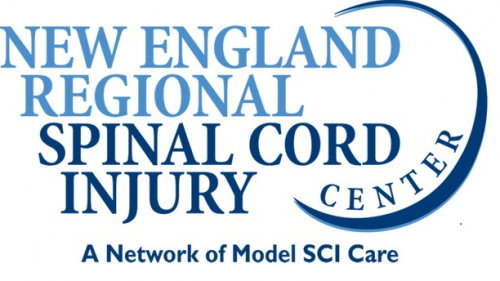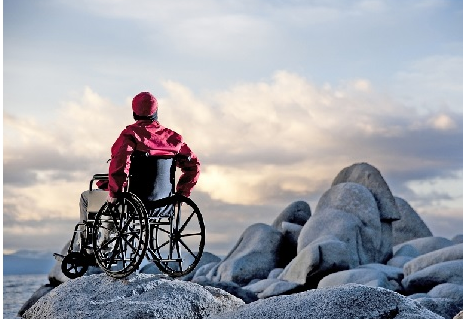Spinal Cord Injury Rehabilitation Program
Early rehabilitation treatment is critical to help patients achieve their fullest potential following a spinal cord injury. At New England Rehabilitation Hospital patients learn how to adapt and return to a normal life. Patients learn how to avoid complications and increase independence. New England Rehabilitation Hospital is pleased to offer a primary care practice for individuals with spinal cord injuries. This program provides individuals with spinal cord injury a community based physician that has the expertise and commitment to care for their special needs on an ongoing and proactive basis.
The Spinal Cord Injury Team of experienced clinicians at New England Rehabilitation Hospital may include some or all of the following professionals dependent on the patient’s individual needs:
The Spinal Cord Injury Rehabilitation Team Consists of:
New England Rehabilitation Hospital’s Spinal Cord Rehabilitation Program is designed to help individuals maximize their functional abilities so they can successfully return to the community. This goal is accomplished through development of an individualized treatment plan for each patient by the interdisciplinary staff. New England Rehabilitation Hospital advocates for involvement of the family in all aspects of care, and ensures patient/family education, support and participation in life care planning. New England Rehabilitation Hospital is fortunate to have the Greater Boston Chapter of the National Spinal Cord Injury Association at the hospital. The chapter is an invaluable asset in the rehabilitation and support of individuals with spinal cord injury.
- Physiatrist (a physician who specializes in physical medicine and rehabilitation) Board Certified in Spinal Cord Injury Medicine
- Psychiatrist
- Nurses specializing in 24-Hour Rehabilitation Nursing
- Occupational Therapist
- Physical Therapist
- Speech Language Pathologist
- Case Manager
- Benefits specialist
- Dietician
- Other medical specialties to include;
- Neurologist
- Neuropsychologist
- ENT
- Oncologist
- Pulmonologist
- Infectious Disease Specialist
- Wound Specialist
Program Components
The Spinal Cord Rehabilitation Program components include:
- 24-Hour Rehabilitation nursing to address wound management, pain management, reinforce acquired functional skills, to assist with education of the patient and family.
- Intensive and Individualized, goal-oriented treatment plans
- Functional Approach to Activities of Daily Living and Community Re-entry
- Availability of State-of-the-Art rehabilitation technology to include:
- AutoAmbulator (partial weight support treadmill training)
- Bioness H200 (Functional Electrical Stimulation)
- Bioness L300 (Functional Electrical Stimulation)
- Adaptive equipment for phone, computer and other aspects of communication.
- Specialized insurance benefits coordination and management
- Family conferences, education and support
- Comprehensive case management discharge planning
- Nutritional management
- Daily Living Skills Training
- Community Re-Entry Program
- Splinting and Orthotics
- Sexual Counseling
- Educational Series
- Driving Evaluation Program, as well as referrals to vendors for access and training to adaptive driving equipment.
- Therapeutic Pool (Woburn only, 96 degrees)
- Comprehensive Outpatient Services/Clinics including access to a physiatrist who specialize in the care of individuals with spinal cord injury.
Benefits Management and Coordination
An illness or injury may affect a person’s capacity for returning to work. If one of our patients is likely to be unable to return to work for a short or extended period, New England Rehabilitation Hospital offers the services of a Benefits Specialist to help the patient and family with practical matters of income replacement and health insurance concerns. The Benefits Specialist addresses such matters as: filing for Family and Medical Leave, Short Term Disability, Long Term Disability, Social Security Disability, MassHealth and COBRA assistance. The Benefits Specialist is also able to address social concerns of emergency aid for those persons who may not have worked prior to the injury or illness.
New England Rehabilitation Hospital recognizes the importance of assisting patients back to their homes, communities and places of work. The benefits service is dedicated to achieving those goals by helping patients and families navigate through disability benefits systems and by providing support to patients and families as they go through this often difficult and confusing process. Many patients have commented that they would not have known “where to begin” and that this service completes their overall rehabilitation.
New England Rehab Offers Elder Assist Clinic
New England Rehabilitation Hospital in conjunction with the Senior Resource Center (SRC) now offers complimentary, weekly Elder Assist Clinics in Woburn. These pre-registered private appointments with SRC’s Eldercare Nurse Attorneys help patients and their families with important issues, to include:
- How to pay for current and long term health care needs
- How to protect your home and your hard assets
- Advice on estate planning
These clinics serve as a bridge in helping New England Rehabilitation Hospital patients and their families deal with transition needs for a safe and timely discharge home, to a skilled nursing facility, or an assisted living facility.
Senior Resource Center, Inc. is a full-service eldercare planning advisory group, supporting seniors and their families throughout Massachusetts, and southern New Hampshire.






